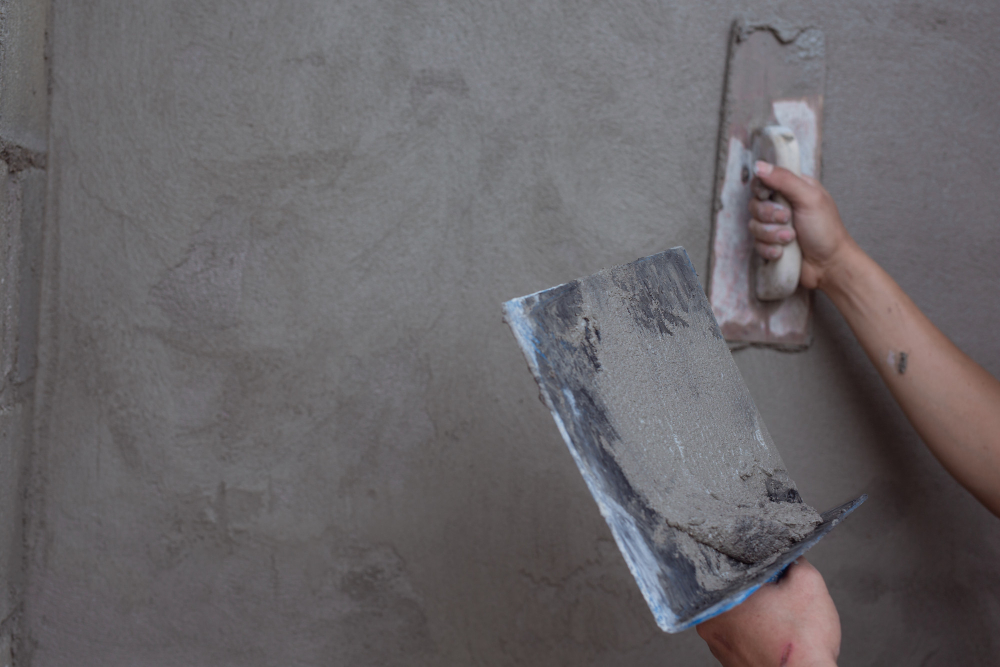Plastering is an essential aspect of home construction and design, blending both aesthetic appeal and structural integrity. This guide aims to provide homeowners with crucial insights and tips, ensuring a successful plastering project that enhances the beauty and durability of your home.
Understanding the Basics of Home Plaster
Definition and Importance
Home plaster is more than just a surface treatment; it’s a vital component in protecting and defining the appearance of your home. It provides a smooth base for painting and decoration, contributing significantly to the overall ambiance of your living space.
Types of Plaster
- Traditional Lime-Based Plasters: Known for their breathability and flexibility, these plasters are ideal for older homes.
- Modern Gypsum and Cement Varieties: These offer quicker drying times and are suitable for various modern construction needs.
Preparing Your Wall for Plaster
The Necessity of Surface Preparation
Proper surface preparation is crucial for ensuring the plaster adheres correctly and lasts longer. This involves cleaning, repairing, and priming the walls.
Steps for Preparing a Wall Without Plaster
Start by removing any old paint or wallpaper, filling in cracks, and sanding down rough spots to create a smooth base.
Addressing Common Challenges in Wall Preparation
Tackle issues like dampness or uneven surfaces with specific treatments, ensuring the wall is in the best possible condition for plastering.
Choosing the Right Plaster: Mud Plaster and Others
Exploring Mud Plaster
Mud plaster, a traditional choice, is eco-friendly and offers a unique, natural aesthetic. It’s particularly suitable for homes looking for an organic feel.
Comparing Different Plaster Types
Evaluate factors like drying time, finish, and compatibility with your wall material when choosing between mud plaster and synthetic options.
Factors to Consider When Choosing Plaster
Consider aspects such as the climate of your area, the intended finish, and the level of maintenance you’re willing to undertake.
The Role of Plastering in Construction and House Design
Structural Benefits of Plastering
A well-applied plaster can protect walls from environmental damage and contribute to the overall stability of the structure.
Plastering and Aesthetic Appeal
The choice of plaster can dramatically affect the look and feel of your home, influencing everything from color to texture.
Practical Tips for Effective Plastering
Best Practices for Application
Apply plaster in even, consistent layers, and allow adequate drying time between coats. Use the right tools for a smooth, professional finish.
Common Mistakes and How to Avoid Them
Avoid overworking the plaster or applying it in unsuitable weather conditions, which can lead to cracking or uneven drying.
Hiring Professionals vs. DIY Plastering
Assessing When to Hire Professionals
For large or complex projects, or if you lack the necessary skills, hiring a professional can save time and ensure a high-quality finish.
DIY Plastering: Tips and Considerations
If you opt for a DIY approach, start with smaller areas, follow safety guidelines, and practice your technique for the best results.
Cost Considerations in Plastering
Understanding the Cost Factors
The cost of plastering can vary based on the type of plaster, the size of the area, and whether you hire professionals.
Budgeting for Your Plastering Project
Plan your budget by getting multiple quotes and considering all materials and potential labor costs. Remember to factor in any tools or equipment you might need.
Maintenance and Upkeep of Plastered Walls
Routine Maintenance Tips
Regular cleaning and inspections can help maintain the appearance and integrity of your plastered walls.
Addressing Wear and Tear
Deal with any cracks or damage promptly to prevent further deterioration. Use compatible materials for repairs to maintain consistency.
Future Trends in Plastering
Emerging Innovations
Stay informed about new materials and methods, such as eco-friendly plasters and advanced application techniques.
Sustainable Practices in Plastering
Embracing sustainable practices, like using natural plasters, can contribute to a healthier home environment and reduce environmental impact.
Conclusion
Embarking on a plastering project can be a rewarding experience that significantly enhances your home’s aesthetic and structural qualities. Following these tips and staying informed about the latest trends and techniques can ensure a successful and durable plastering project that adds value and beauty to your home.

